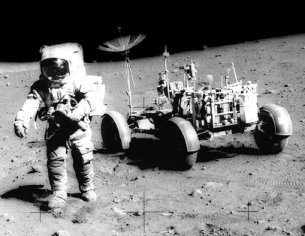
The laws of physics tell us that the gravitational field at any one point is constant. This means that all objects will fall with a constant acceleration. A heavy object and a light object, when dropped from the same place at the same time, will fall at the same rate and hit the ground together.
Many people have difficulty with this principle because it does not seem to agree with our experience. If a feather and a hammer are released from the same height at the same time, the hammer will clearly hit the ground first. This is not a violation of the principle, though. The problem is that another force, air resistance, is interfering with the observation. While gravity treats all objects equally, air resistance does not. Significant air resistance acting on the light feather slows it down. There is much less air resistance acting on the heavy hammer, so it isn't slowed as much, and hits the ground first.
If only we could remove the effects of air resistance. Well, we can! There is no atmosphere, and therefore no air resistance, on the moon. Apollo 15 astronaut David Scott demonstrated this principle by dropping a feather and a hammer on the moon in 1971.
Clicking on the photo below, showing David Scott and the lunar rover vehicle on the moon, will enable you to open or download a video clip of the experiment. Note: this is a large mpeg file, about 6.4 Mb, which will take a long time to download. The video clip lasts about 50 seconds. Make sure your sound is on.
